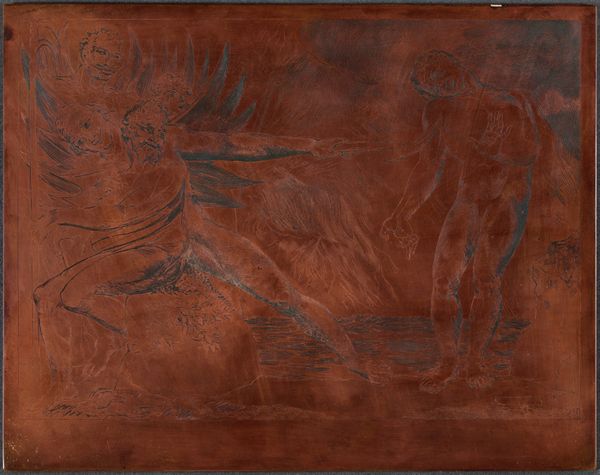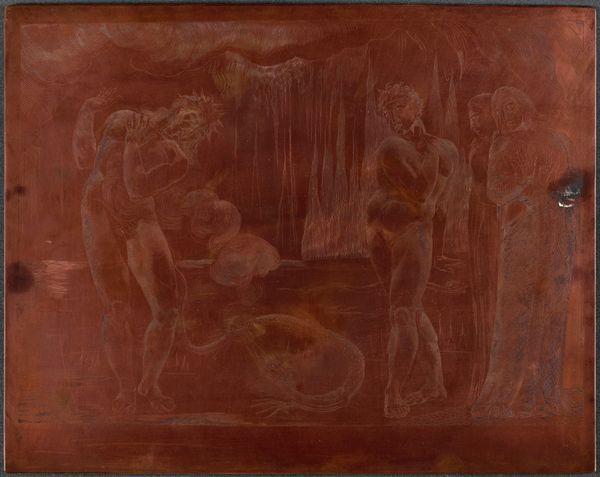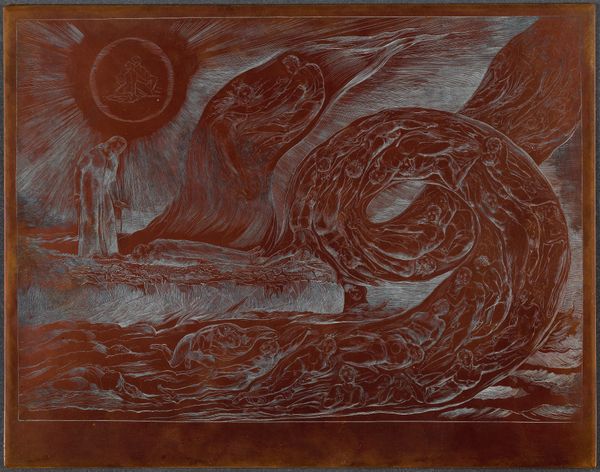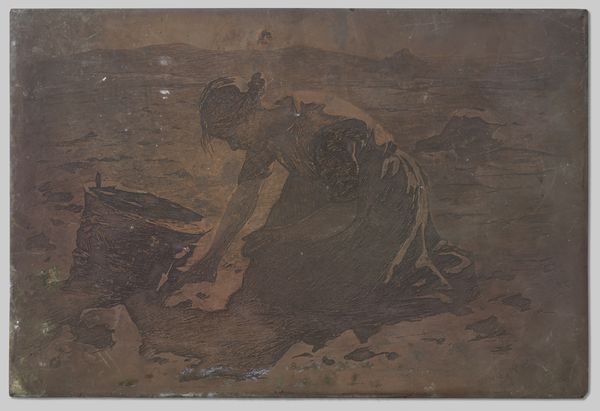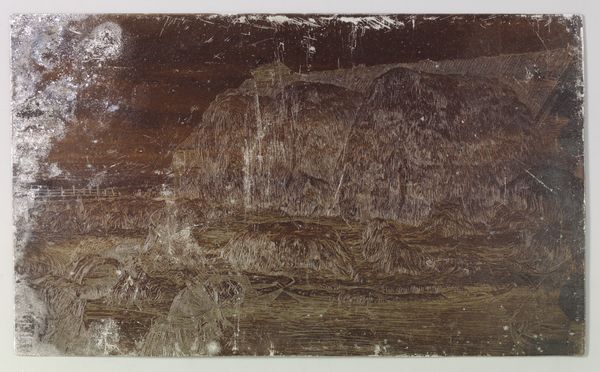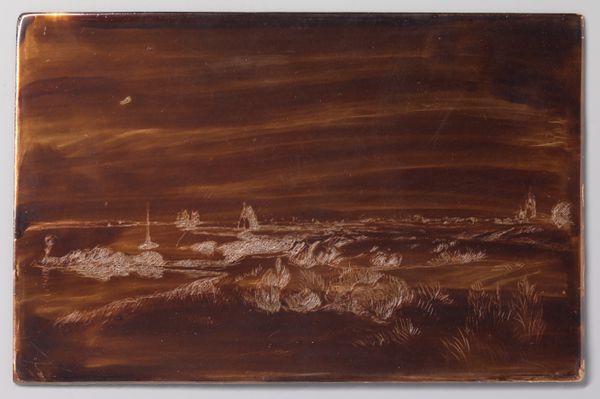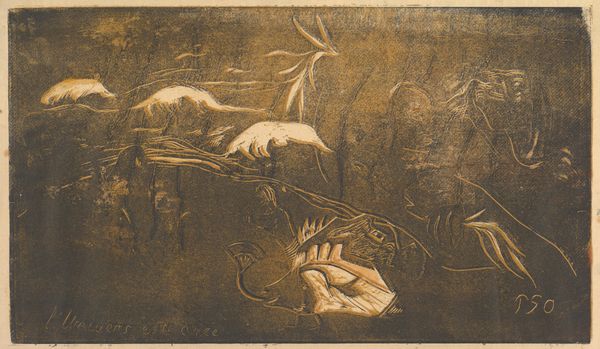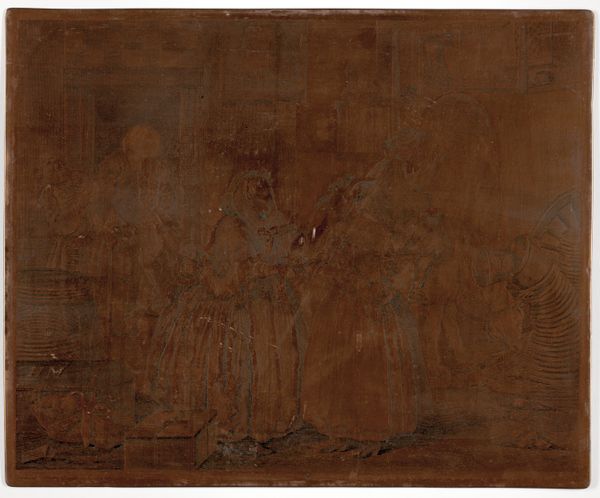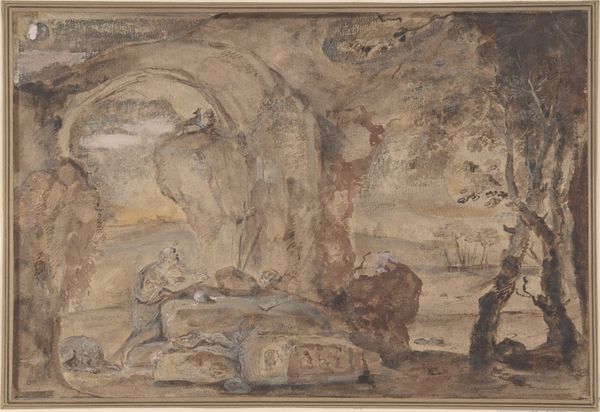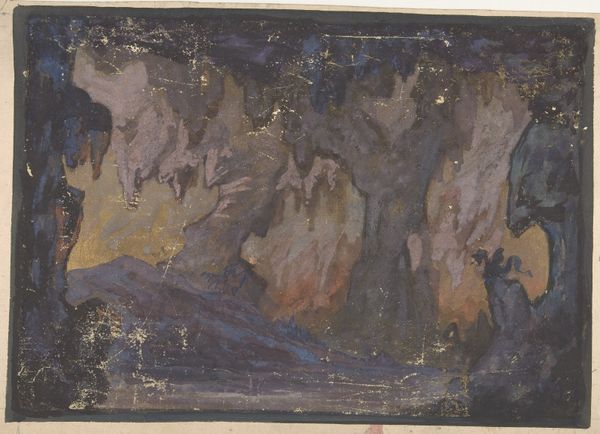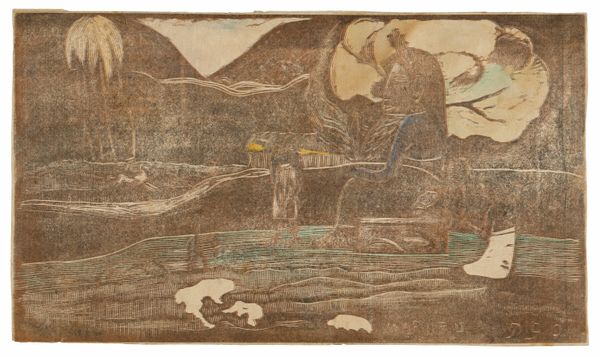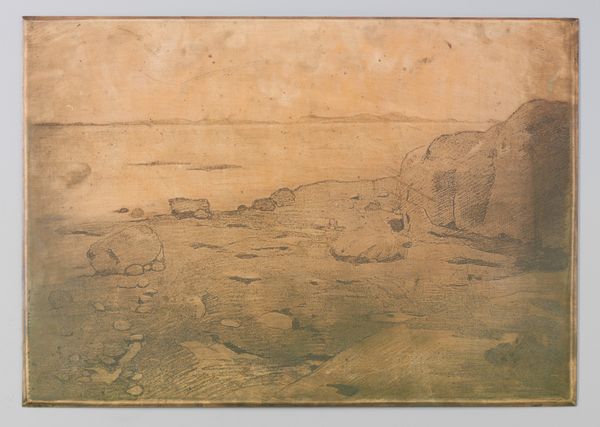
The Circle of the Falsifiers: Dante and Virgil Covering their Noses because of the st 1827
0:00
0:00
print, etching
#
narrative-art
# print
#
etching
#
landscape
#
figuration
#
romanticism
#
history-painting
Copyright: National Gallery of Art: CC0 1.0
Editor: William Blake’s etching, "The Circle of the Falsifiers: Dante and Virgil Covering their Noses because of the stench", created in 1827, definitely evokes a sense of discomfort. The figures are almost ghostly, and the landscape seems to mirror their internal turmoil. What’s your read on this piece? Curator: Discomfort is spot-on. Blake wasn’t merely illustrating Dante; he was wrestling with its themes, using the image to tap into his own anxieties about spiritual and artistic corruption. The stench, literal in Dante's poem, becomes a metaphor for the decay Blake perceived in his own society and perhaps within himself. You notice how Dante and Virgil aren't just spectators. They are implicated; forced to confront the grotesque reality, almost mirroring it with their own gesture of covering their noses. It asks, doesn’t it: How close are we, really, to what disgusts us? Editor: That's a compelling thought, this sense of implication. So it's less about judging the falsifiers and more about recognizing that capacity within everyone? Curator: Precisely. Blake’s Romantics valued raw, emotional honesty. He isn’t interested in simple moralizing. He is using Dante to look inwards, toward humanity’s inherent contradictions. Does the bleak landscape itself perhaps seem like a reflection of that internal conflict? Editor: It does now, especially with your explanation about honesty. So much of this scene feels unresolved, and heavy with feeling, which wasn’t something I grasped on my first glance. Curator: Indeed. Blake rarely offers easy answers. He prefers to provoke questions that gnaw at our certainties. I still find his ability to express spiritual torment quite startling and compelling.
Comments
No comments
Be the first to comment and join the conversation on the ultimate creative platform.
